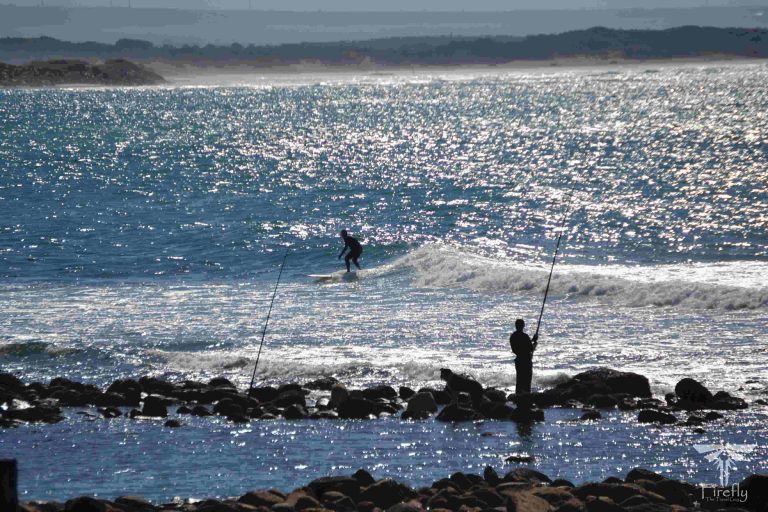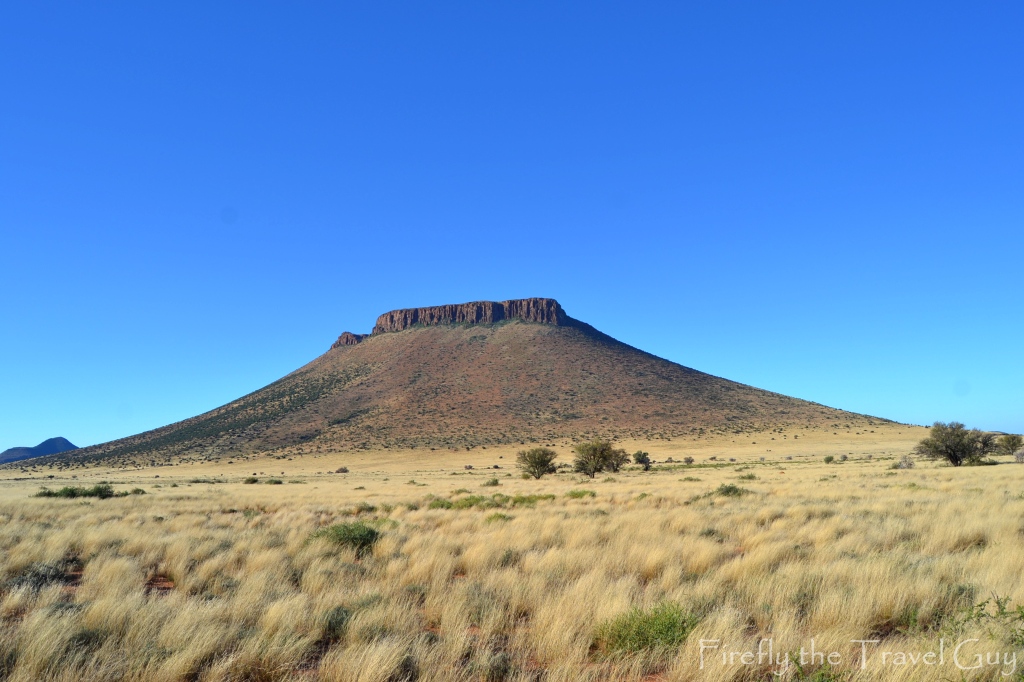
Tafelberg is one of the best-known landmarks in the Middelburg (Karoo) district. The flat-topped mountain is a striking mesa‑like mountain rising above the flat plains 21km south of Middelburg along the N10 in the direction of Cradock. Its name literally means “Table Mountain” in Afrikaans. There’s just no Devil’s Peak or Lion’s Head flanking it, nor is there a cable car to get to the top.
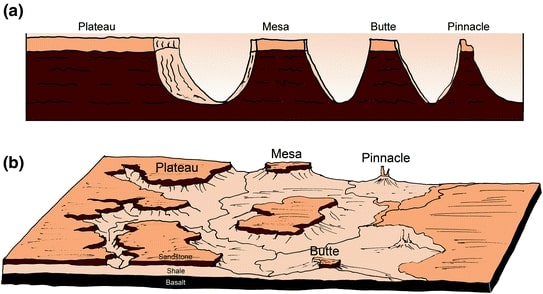
The flat-topped Karoo Koppies are one of the icons of the Karoo region, so here’s a quick Geography lesson on what they are and how they were formed.
There are four types of Karoo Koppies. Pinnacles, buttes, mesas and plateaus. To know how they were formed, we have to go back 300 million years.
Sediment Deposition: Over 300 million years ago, large basins formed in Southern Africa, collecting layers of sediments like mud, silt, and sand. These layers eventually formed the Karoo Supergroup.
Magma Intrusions: During the breakup of the supercontinent Gondwana, molten rock (magma) was forced into these sedimentary layers, forming dolerite sills. These sills were essentially horizontal layers of hard, intrusive rock.
Exposure and Erosion: After the initial phase of magma intrusion and uplift, a long period of massive erosion began, gradually wearing away the layers of rock.
Differential Erosion: The harder dolerite sills were more resistant to erosion than the softer Karoo sediments (like shales) that lay beneath them.
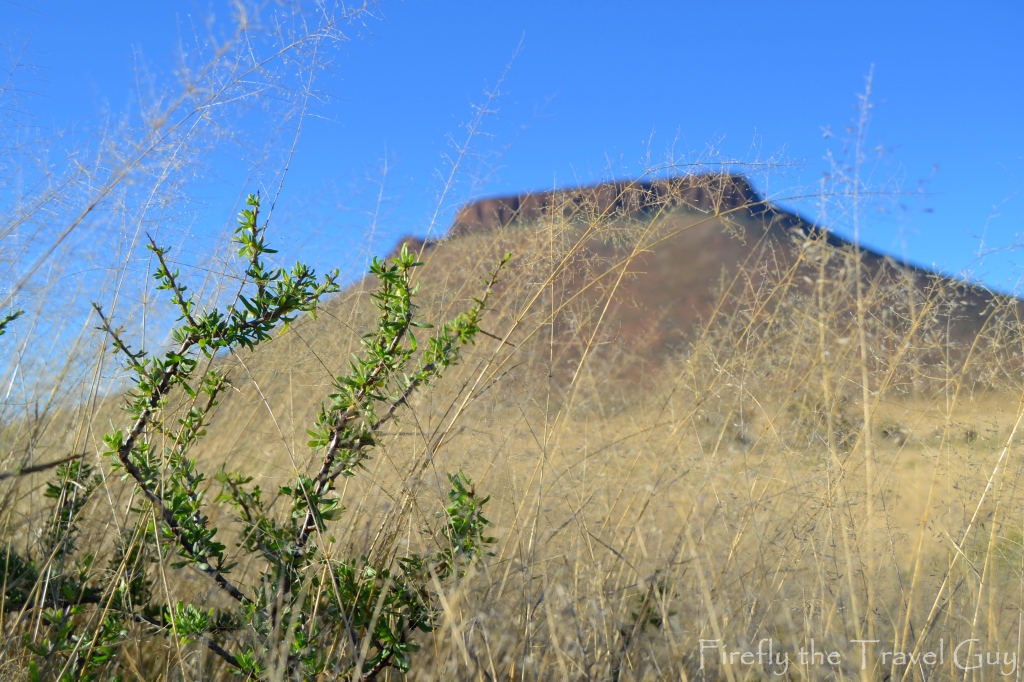
Pinnacles are very pointy Karoo Koppies like Teebus between Middelburg and Steynsburg.
A butte is a small flat-topped hill or mountain like Koffiebus next to Teebus. Most geographers would say that a butte is taller than it is wide.
A mesa, like Tafelberg, is a medium-sized flat-topped hill or mountain usually with steep slopes.
And a plateau is a really large flat-topped hill or mountain that rises sharply above the surrounding area on at least one side.
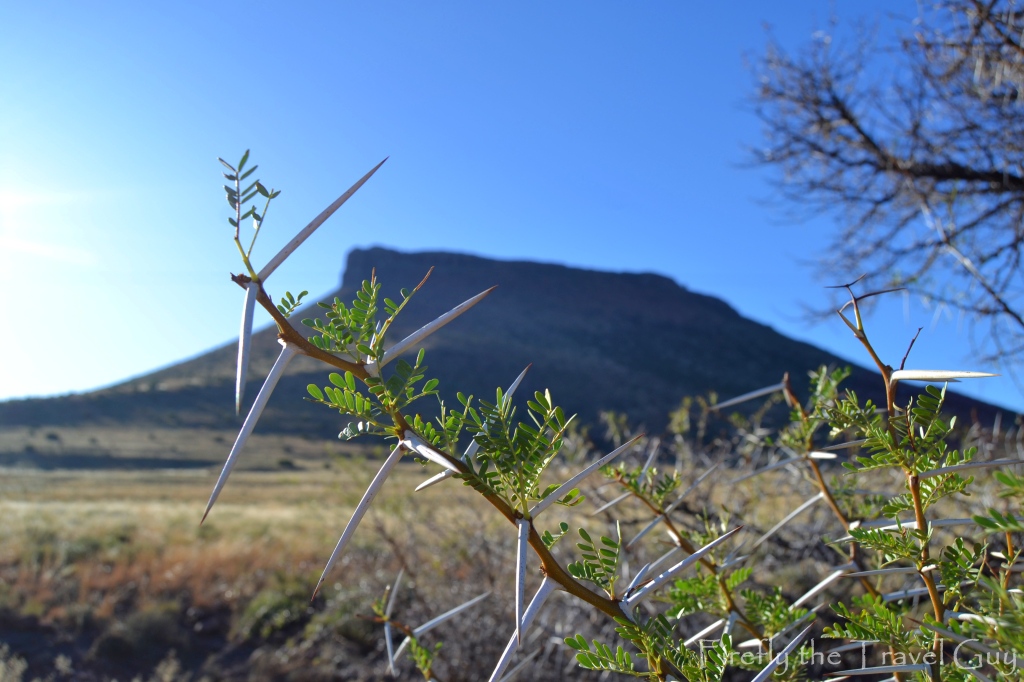
Research shows vegetation on Tafelberg (and adjacent mesas) differs sharply from the surrounding plains, with higher rainfall retention and rockier substrate resulting in unique plant species and less overgrazing on the summit and slopes.The broader Nama‑Karoo on top of the mountain supports spectacular wildflower displays after summer rains, with succulents and shrubs adapted to arid extremes, from snow to scorching heat.
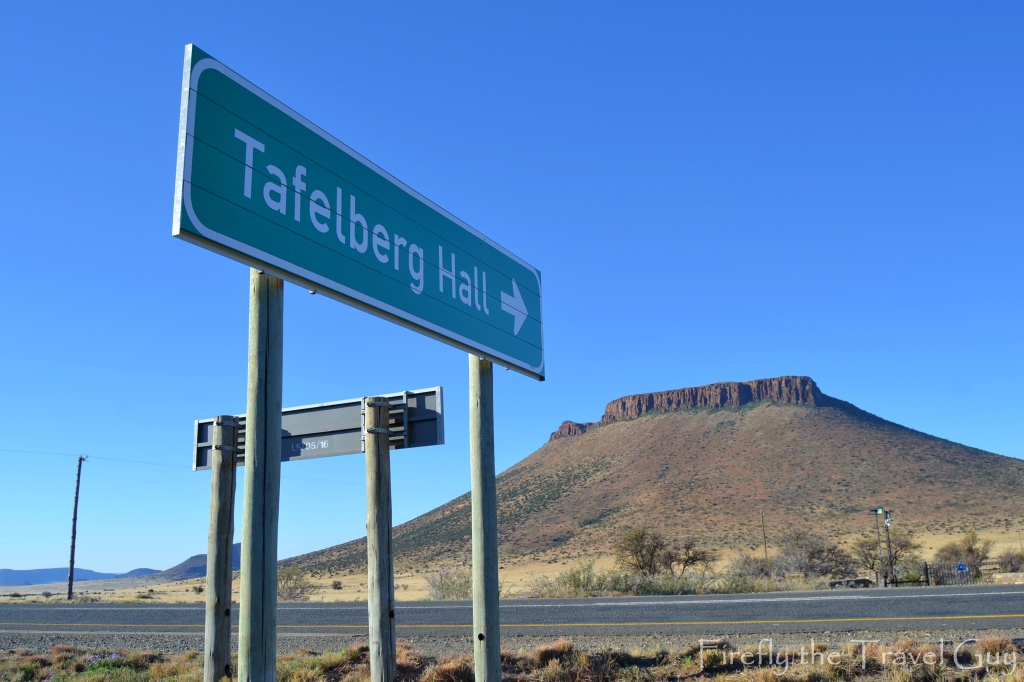
Just behind the mountain is the historical homestead of Tafelberg Hall. Unfortunately, I didn’t get to see it, but hoping to do so someday. The architect of the home was the internationally well-known Sir Herbert Baker. All the sandstone used came from the farm. Tafelberg Hall was established by John Sweet Distin, a Cape politician turned ostrich farmer, in the late 19th century.

Distin advocated the need to divide livestock farms into fenced off stock camps for veld rejuvenation and animal health in the 1860s. He put it before parliament and, in so doing, lost the parliamentary seat he held over the fencing question. Defeated in parliament, Distin headed back to his farm and set about fencing his own farm. If others wouldn’t listen, he would go it alone. At the time, no one wanted to concede that the vast coffers required for fencing were a necessity, until overgrazing and disease forced the government’s hand many years later. The Act regulating the erection and maintenance of dividing fences was passed in 1883. Distin’s ‘first fence’, now a national monument, is still standing taught and strong, tethered to the original sneezewood fencing poles at the foot of the mountain.

The area is also known for San rock art and fossil deposits, something I’d like to see even more than the historic homestead.
So next time you drive from Middelburg to Cradock, keep an eye out on the left-hand side for Tafelberg. This may not be Cape Town, but you definitely won’t miss it.

